(Above) The community response unit at The Salvation Army’s Addiction and Rehabilitation Centre in Victoria fed more than 300 people a day during the pandemic.
The Salvation Army’s emergency disaster services (EDS) has been serving the people of Canada since 1917, when two ships collided in Halifax Harbour. Last year, EDS helped more than 15,000 people during emergencies or when disaster struck.
COVID-19 forced us to take extraordinary measures to ensure we met needs where they existed. For the first time in our territory’s history, 29 of 48 community response units (CRUs) were active at the same time. While our response process changed to ensure volunteers and guests stayed safe, our dedication to helping people in their time of need didn’t.
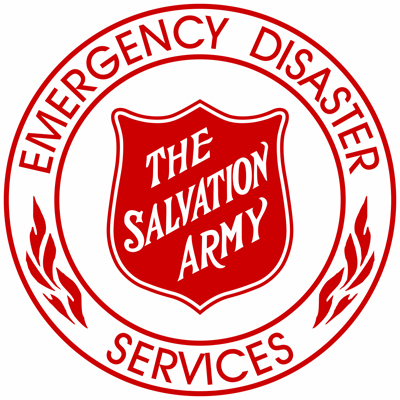 The most visible Salvation Army emergency disaster service is the meals and drinks served to disaster survivors and emergency first responders. In addition, and unique to The Salvation Army, is our emotional and spiritual care component, which is embedded in everything we do.
The most visible Salvation Army emergency disaster service is the meals and drinks served to disaster survivors and emergency first responders. In addition, and unique to The Salvation Army, is our emotional and spiritual care component, which is embedded in everything we do.
During COVID-19, we knew we couldn’t move personnel from place to place. Therefore, we ramped up our training program to increase our capacity to help. For the first time, our training was available virtually and more than 400 volunteers and Salvation Army personnel participated.
Due to an incredibly generous donation, our fleet of CRUs across Canada increased, which helped us extend our reach. New vehicles were purchased and older ones were refurbished with new equipment that increased our feeding capacity.
With cafés and community centres shut down, more hungry people were on the streets looking for help. Our mobile units served food and hydration to people who had lost their jobs, seniors on fixed incomes, people experiencing homelessness and students whose schools had closed and normally would rely on our lunch programs. Our services were needed more than ever.
The pandemic left many vulnerable people without access to resources to meet their most basic needs, such as food. Normally, our primary response is food services at disasters such as floods and fires, lasting up to two weeks. Our COVID-19 support went for longer periods of time, using more personnel.
Other hazards didn’t stop because of the pandemic. The Salvation Army’s preparedness and well-rehearsed emergency protocol enabled us to deliver fast and efficient services to help reduce the stress that vulnerable people already faced.
Disaster can happen to anyone. I’ve heard countless stories from people who never would have believed they needed The Salvation Army. When you support The Salvation Army, you are giving them hope for a better tomorrow.
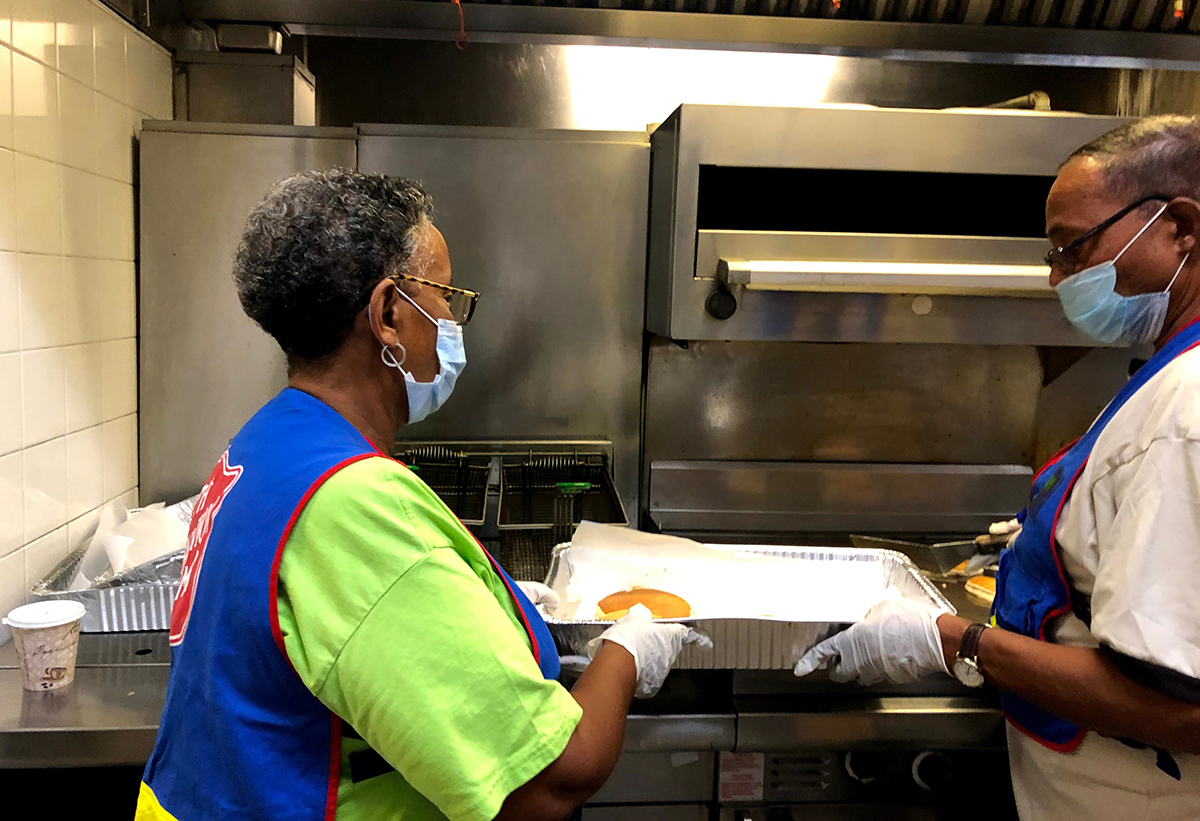
↑ The EDS team in Bermuda prepared and served food to those affected by hurricane Paulette last September, when approximately 22,000 residents lost power.
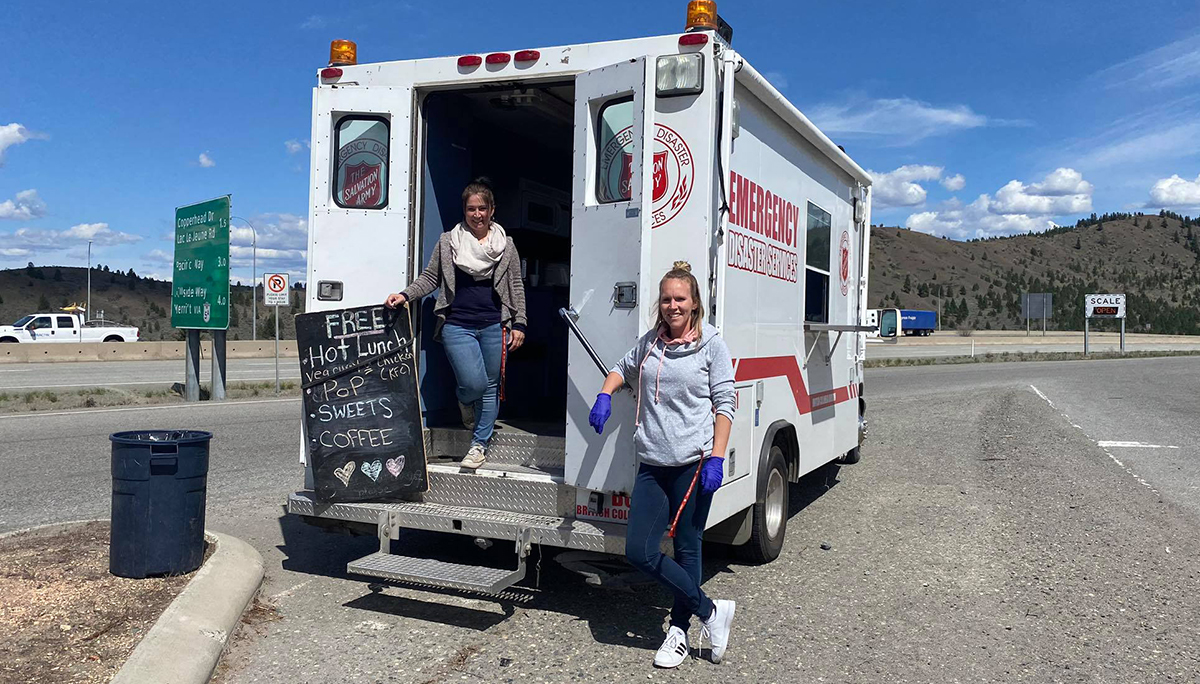
↑ In Kamloops, B.C., an EDS team mobilized to serve meals for truckers.
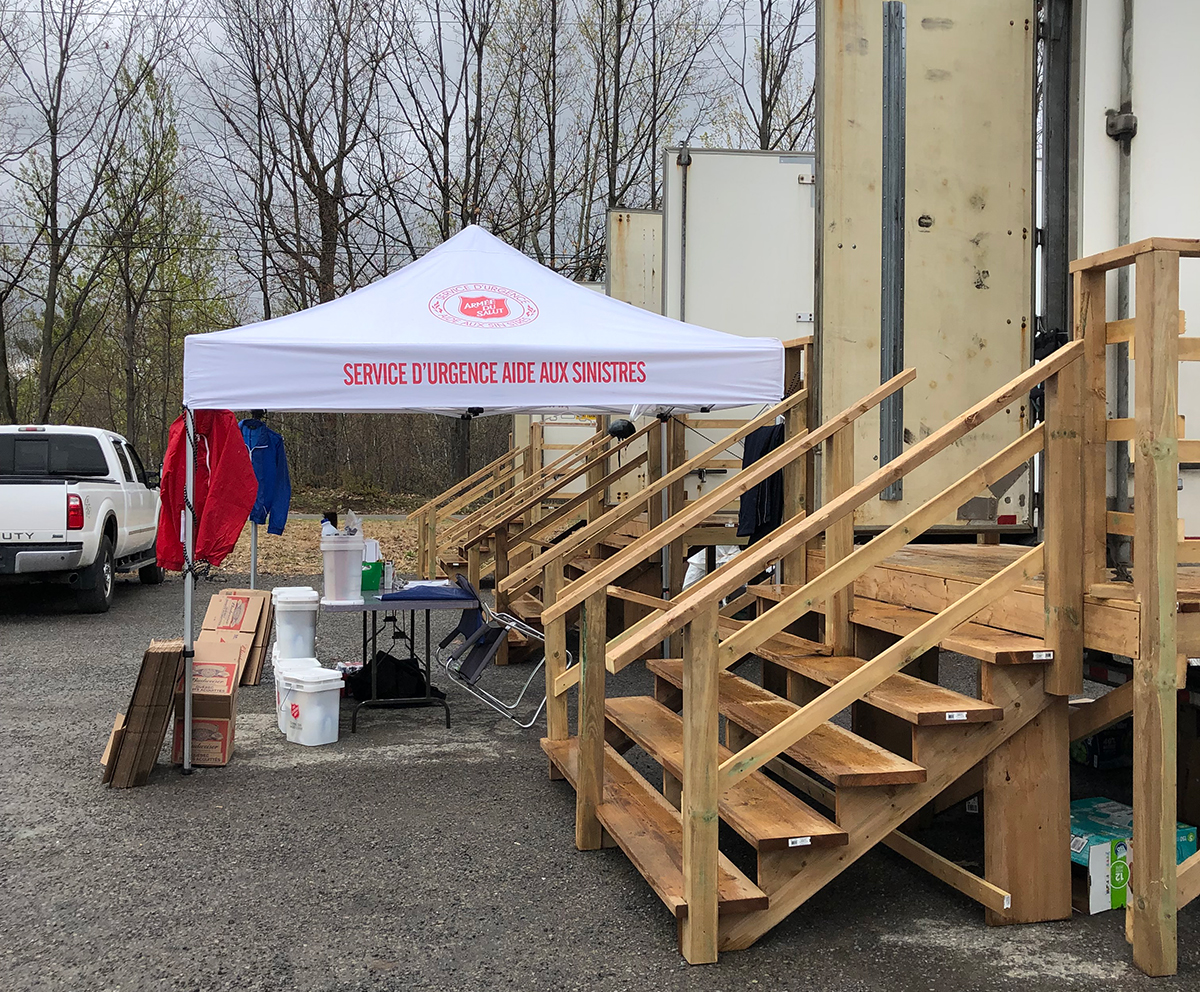
↑ When a river dam broke and flooded approximately 2,500 homes in Sainte-Marthe-sur-leLac, a suburb of Montreal, the Army responded by co-ordinating donations, supplying food and distributing cleaning kits.
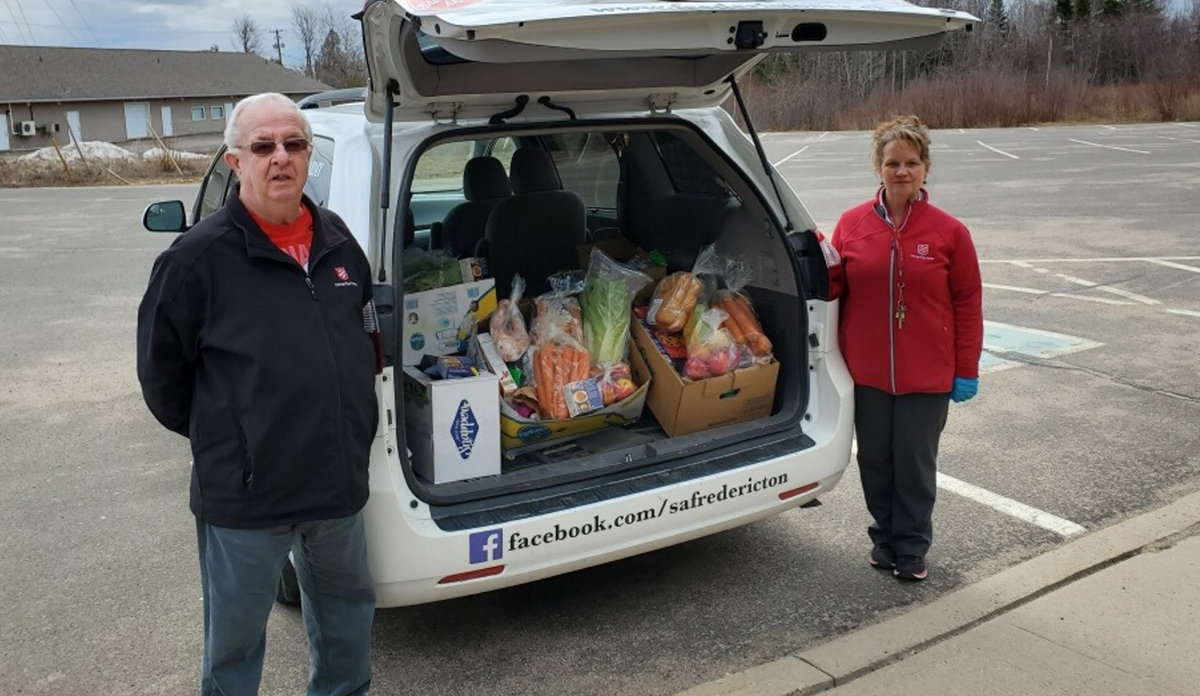
↑ When the pandemic made it difficult for seniors in need to find transportation to the Salvation Army food bank in Fredericton, volunteers brought groceries and household items to them.
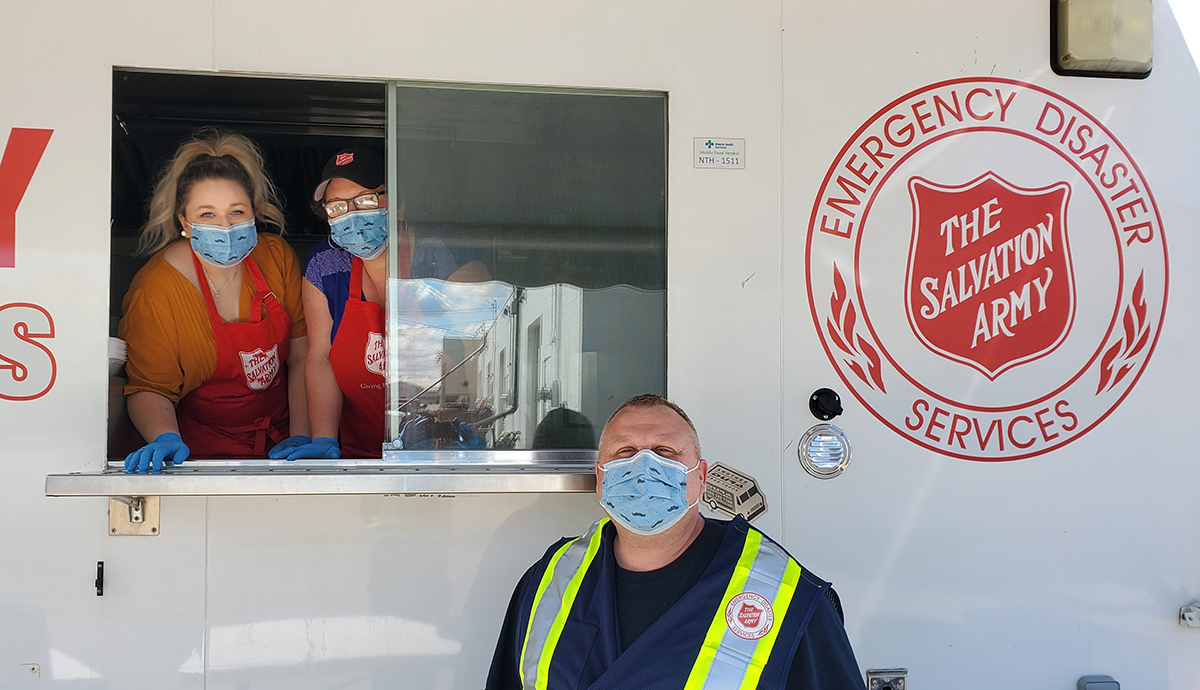
↑ Just after the onset of the pandemic, the hamlet of Fort Vermilion and neighbouring Tallcree First Nation flooded due to an ice jam along the Peace River in northern Alberta. More than 150 structures were damaged and 750 residents were forced from their homes. Salvation Army EDS teams from Grande Prairie responded, providing meals to evacuees and first responders over a three-week period, with their newly acquired mobile kitchen.
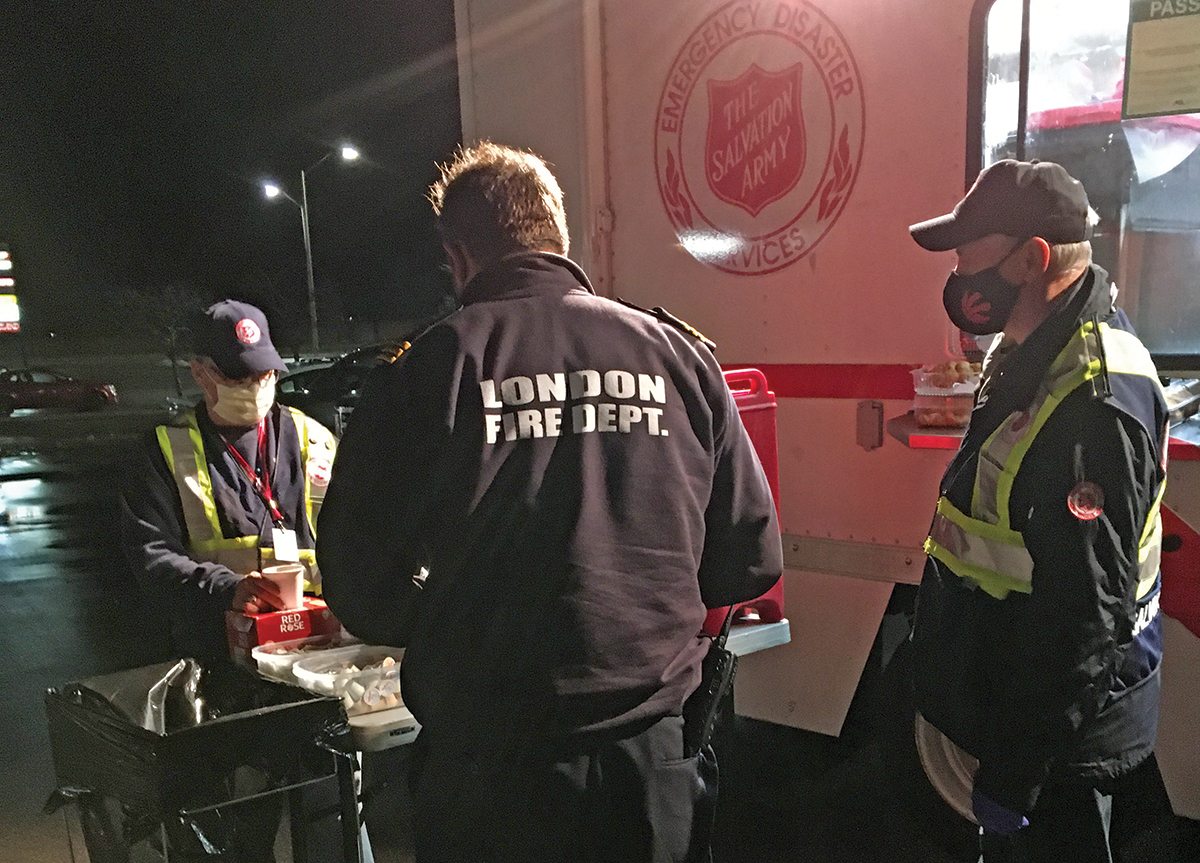
↑ Two people died and five others were injured when part of a four-storey building under construction collapsed in the Westmount neighbourhood of London, Ont., last December. The Salvation Army was on scene to provide food and hydration for rescue workers.
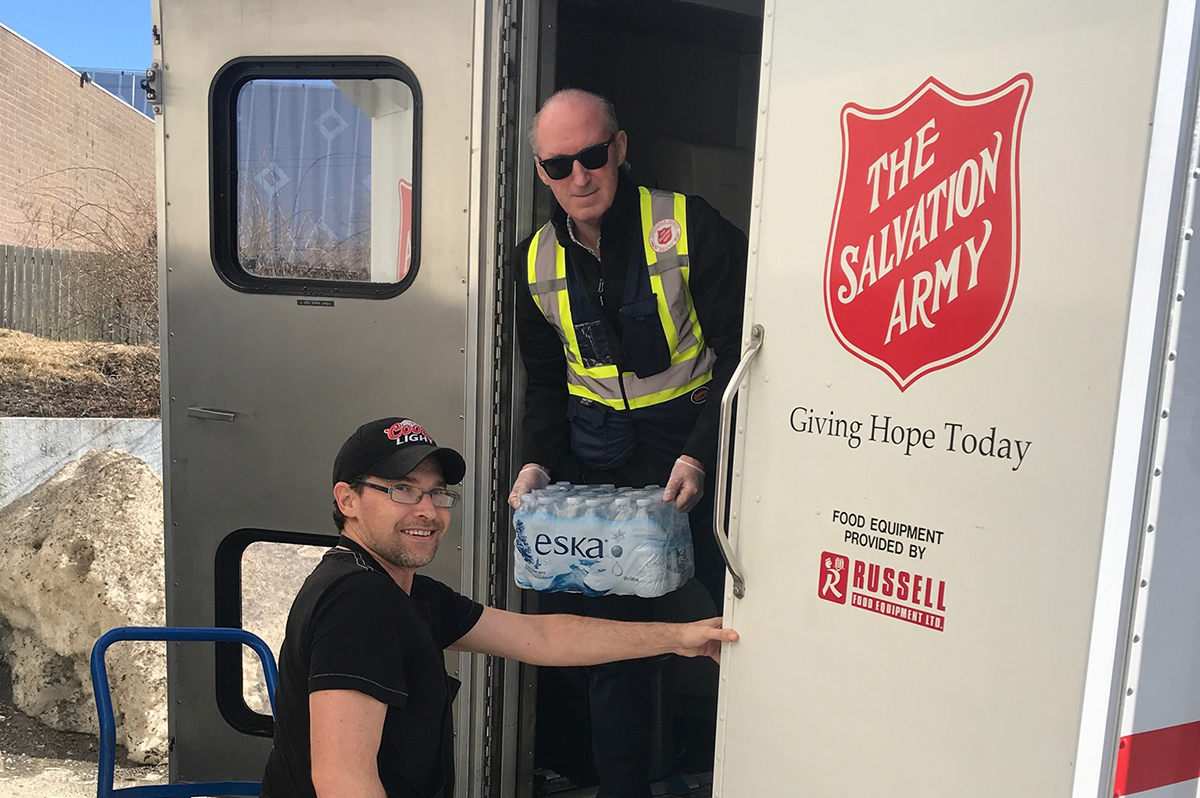
↑ In Halifax, volunteers delivered hot meals to guests staying at a Salvation Army pop-up shelter, opened in response to COVID-19 safety measures.
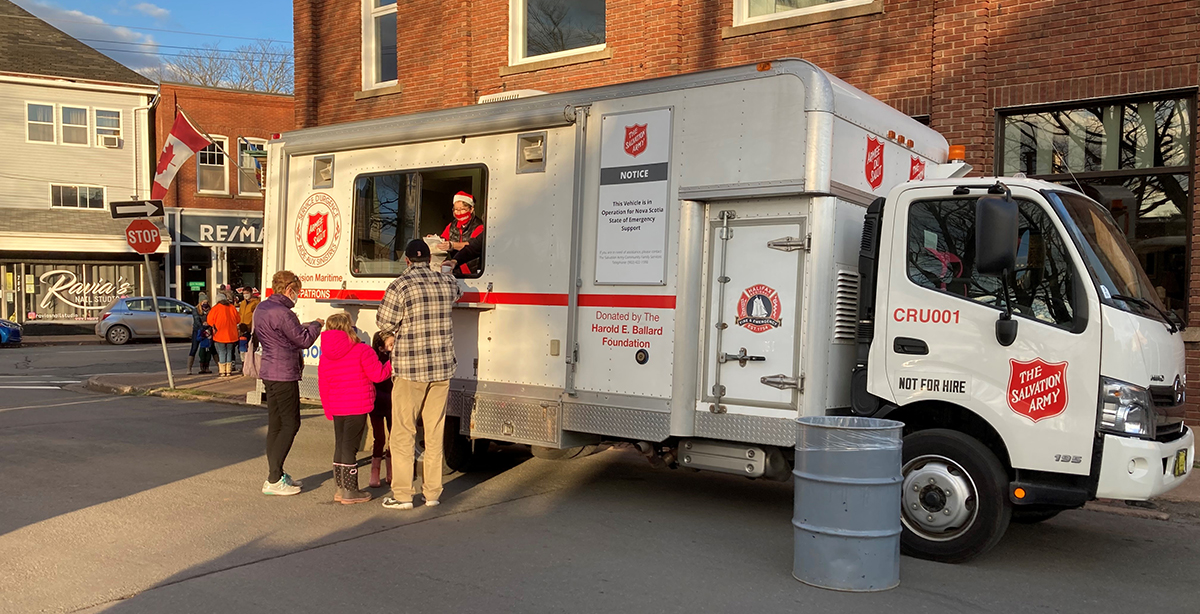
↑ Volunteers from The Salvation Army in Truro, N.S., distributed cookies during a stationary Christmas parade.
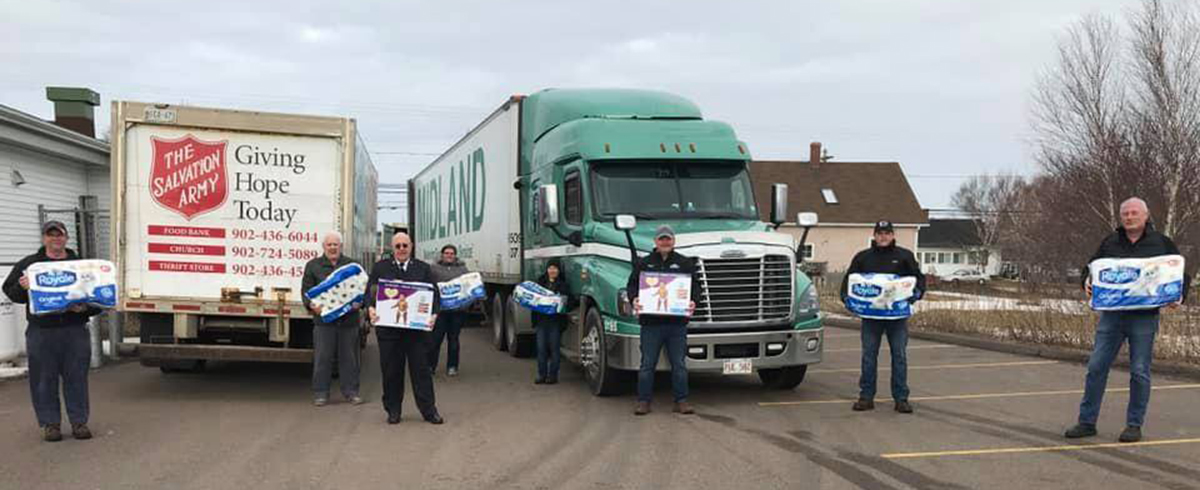
↑ The Army’s food bank in Summerside, P.E.I., received a generous donation of 11,340 kilograms of food items and paper products from J.D. Irving, Limited.
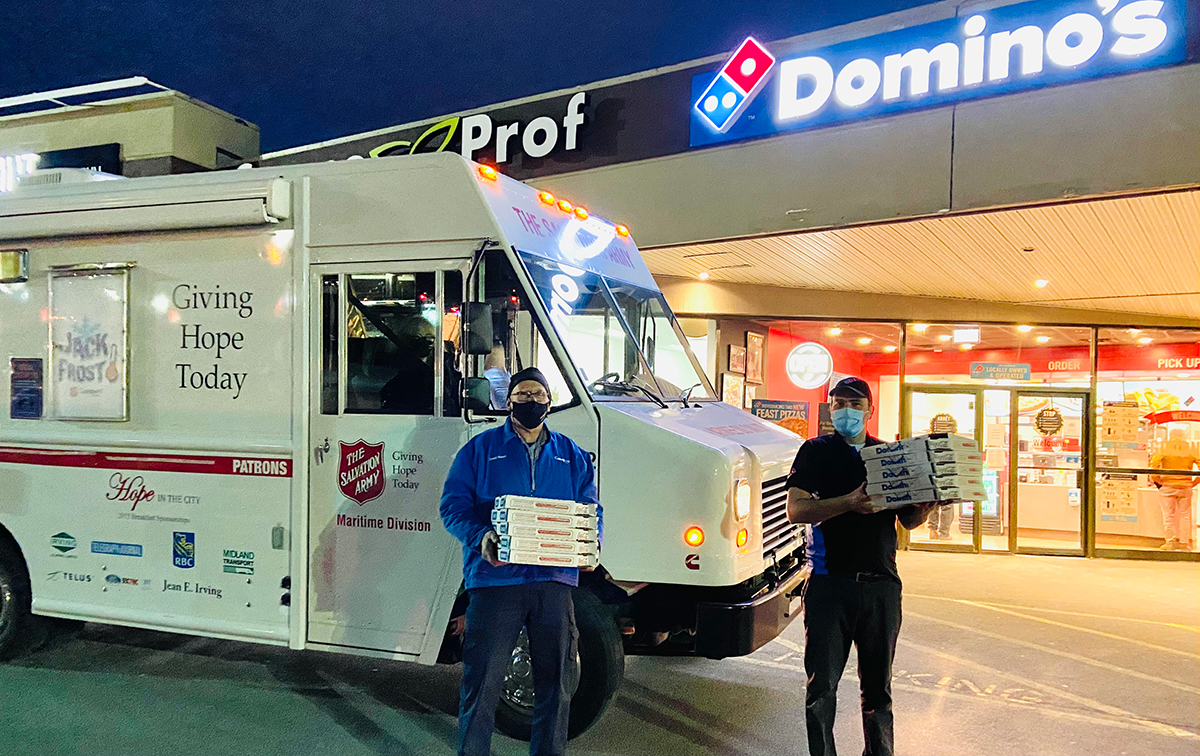
↑ The Army’s Jack Frost program in Saint John, N.B., received a donation from Domino’s Pizza. The free pizza was distributed along with coats, hats and mitts.
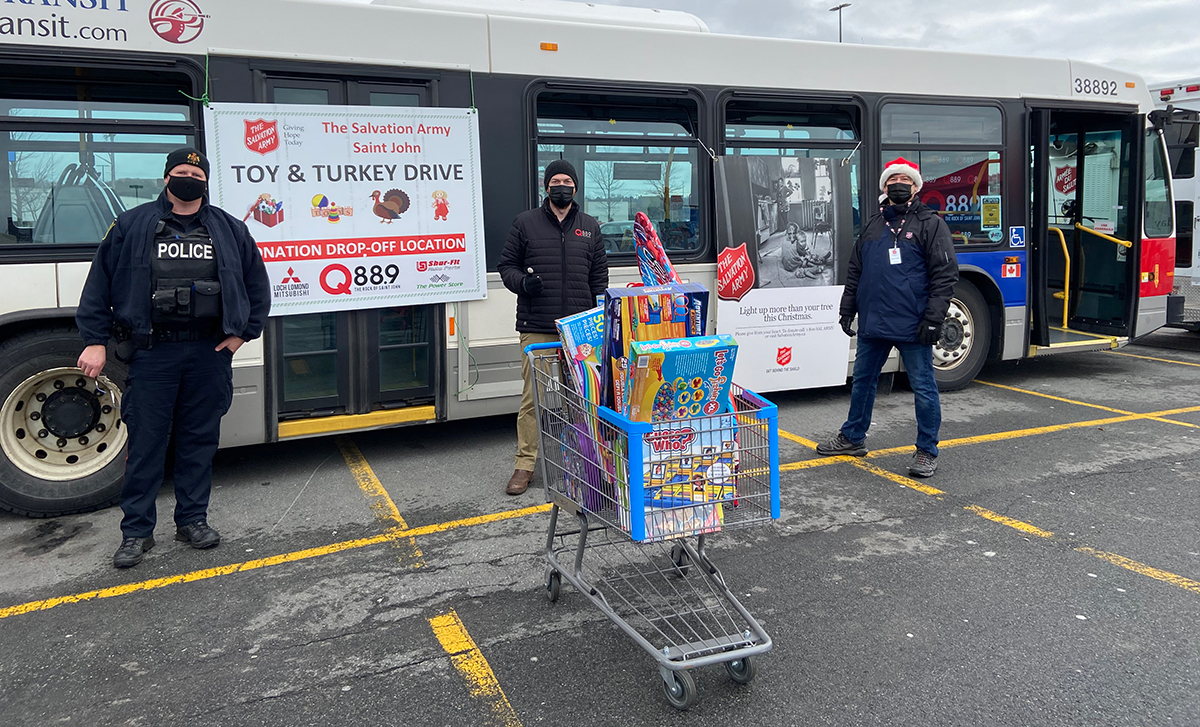
↑ The EDS team in Saint John, N.B., held a toy and turkey drive in a Walmart parking lot last November, sponsored by Q88.9, Saint John Transit, the local police department, Loch Lomond Mitsubishi, Shurfit Auto Parts, The Power Store and Walmart.
This story is from:





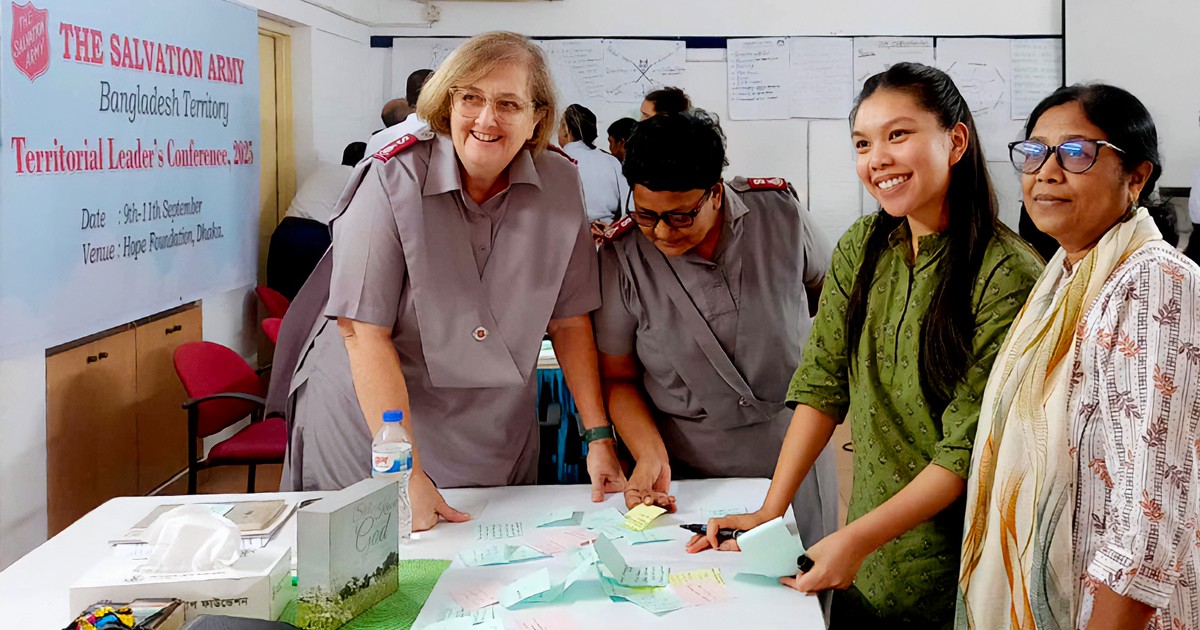

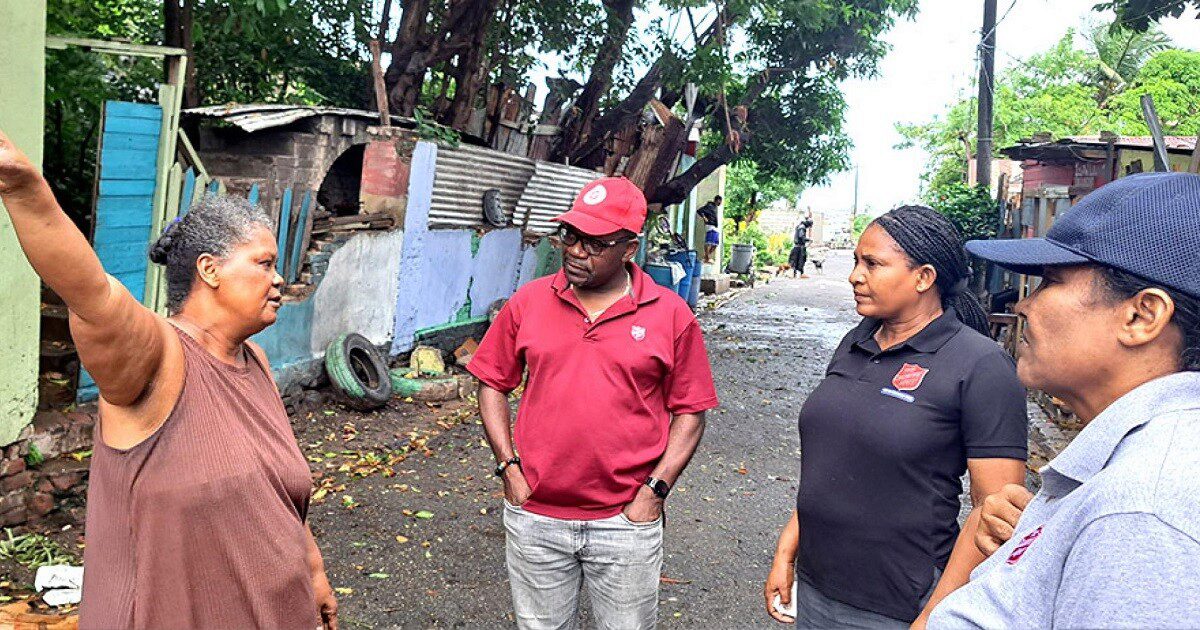


Leave a Comment